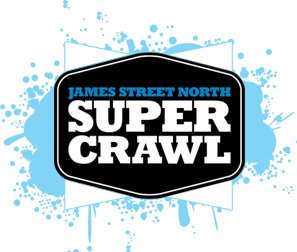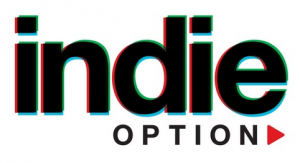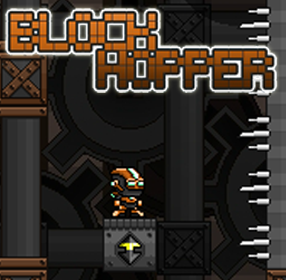Intersections between Hamilton art and tech
Part one of a two part series on art and technology in Hamilton. Part one is focused on current intersections between art and technology, part two is focused on a potential opportunity and is posted here.
 Supercrawl 2012 (@supercrawl) brought together tens of thousands of Hamiltonians and visitors to celebrate and experience Hamilton’s creative community. Hamilton has always had an important arts and cultural community. But it’s very clear that over the last decade the sector has grown in size and importance with initiatives and events like the James North art crawl, Supercrawl and others that are too numerous to list in their entirety, but for example: Hamilton24 (@TheHamilton24), Cobalt Connects (@CobaltConnects), Gallery 205 (@205Cannon), The Pearl Company (@ThePearlCompany), Hamilton Fringe Festival (@FringeHamilton), and many, many more. Whatever your thoughts on art being the new steel, the art and cultural community has become a lynchpin of an evolving Hamilton.
Supercrawl 2012 (@supercrawl) brought together tens of thousands of Hamiltonians and visitors to celebrate and experience Hamilton’s creative community. Hamilton has always had an important arts and cultural community. But it’s very clear that over the last decade the sector has grown in size and importance with initiatives and events like the James North art crawl, Supercrawl and others that are too numerous to list in their entirety, but for example: Hamilton24 (@TheHamilton24), Cobalt Connects (@CobaltConnects), Gallery 205 (@205Cannon), The Pearl Company (@ThePearlCompany), Hamilton Fringe Festival (@FringeHamilton), and many, many more. Whatever your thoughts on art being the new steel, the art and cultural community has become a lynchpin of an evolving Hamilton.
Technology is another sector that is making an increasing contribution to Hamilton’s evolution. Local startups like Weever Apps (@WeeverApps) that can double in size in three months by selling their software product to clients all over the world also make Hamilton a more prosperous city. Much of the technology industry revolves around intersections with existing industries. So many industries have been revolutionized by technology over the last decade that it has been said that “software is eating the world”. Locally, technology is finding award winning intersections with health care at Mohawk College’s annual AppsForHealth (@AppsForHealth) conference.
Which makes me think about what intersections already exist between technology and art in Hamilton. I’m not focusing on intersections that involve the use of technology, like for example digital animation, where you’ve got a company like Pipeline Studios making a great contribution to Hamilton’s economy. These types of using technology intersections certainly have much value in their own right, like Michael Canton’s (@valleytownmedia) Hamilton web series community initiative for the online video community in Hamilton. But I’m thinking more about intersections that involve the development of some kind of software product or service (i.e. apps, websites) that are related to art.
 One example of a Hamilton art and technology intersection is Indie Option (@indieOPTION) by Linda Mitton (@llmitton) and Sue-Roz Baker (@SueRozBaker). Indie Option is a hub for independent film makers to connect with one another and a management tool that allows them to collaborate on projects. Indie Option ran a BREAKOUT Film Festival, and the web application itself was demoed at DemoCampHamilton6.
One example of a Hamilton art and technology intersection is Indie Option (@indieOPTION) by Linda Mitton (@llmitton) and Sue-Roz Baker (@SueRozBaker). Indie Option is a hub for independent film makers to connect with one another and a management tool that allows them to collaborate on projects. Indie Option ran a BREAKOUT Film Festival, and the web application itself was demoed at DemoCampHamilton6.
Another example that you can’t go without mentioning when talking about art and technology in Hamilton is inventor and award-winning Sheridan professor Dan Zen (@DanZen). He stole the show at the inaugural DemoCampHamilton with his Opartica software that lets you fly through 3D art that you create and share. He has an entire “deck of creations” that you can check out here. One of my personal favourites is the fun drawing tool Swoodle – give it a try! You might have seen him at Supercrawl giving a live demo of his lastest creation called Hangy, which is a form of wearable computing or “Mobidallion” as he has named it:
 The other obvious existing intersection that I’d like to mention is video games. We’ve got at least six firms already in Hamilton: Hard Circle (@HardCircle), Battlegoat Studios (@battlegoat), Snakehead Games (@snakeheadgames), GreenPixel (@GreenPixelDev), Four Seven Games (@fourSevenStudio), and E/ D&P Games. GreenPixel in particular uses pixel art as part of their video games like BlockHopper, and their flash webcomic. When looking at art and technology intersections I believe the video game industry has the highest potential for contributing to the ongoing revitalization of Hamilton, especially given the impact it has had in Montreal. A lot of video games require great creative talent to be successful – artists, graphic designers, musicians, and story tellers. It’s a controversy whether video games themselves should be considered art due their goal-oriented gameplay, points and rules. To me there’s no doubt video games are a form of art.
The other obvious existing intersection that I’d like to mention is video games. We’ve got at least six firms already in Hamilton: Hard Circle (@HardCircle), Battlegoat Studios (@battlegoat), Snakehead Games (@snakeheadgames), GreenPixel (@GreenPixelDev), Four Seven Games (@fourSevenStudio), and E/ D&P Games. GreenPixel in particular uses pixel art as part of their video games like BlockHopper, and their flash webcomic. When looking at art and technology intersections I believe the video game industry has the highest potential for contributing to the ongoing revitalization of Hamilton, especially given the impact it has had in Montreal. A lot of video games require great creative talent to be successful – artists, graphic designers, musicians, and story tellers. It’s a controversy whether video games themselves should be considered art due their goal-oriented gameplay, points and rules. To me there’s no doubt video games are a form of art.
Art and technology are already intersecting in Hamilton. And I’m sure there’s other existing intersections that I don’t know about. There’s one opportunity that I think about a lot, and I’ll talk about it in part two later this week.